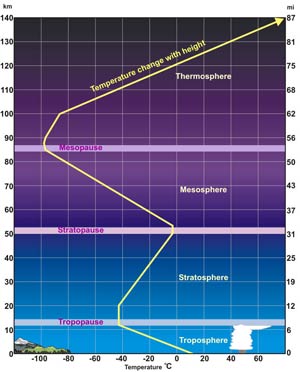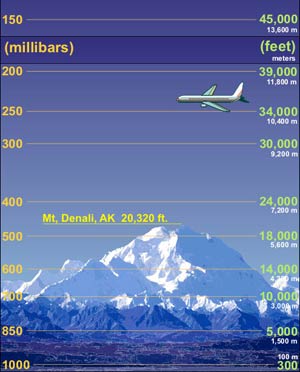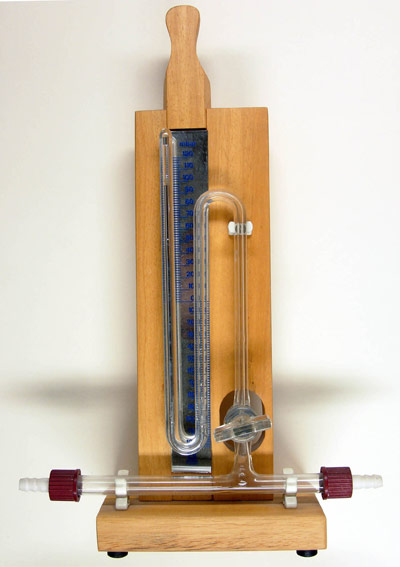The Earth’s atmosphere extends indefinitely upward from its surface, becoming increasingly thinner with distance from the Earth (99% of the atmosphere is below 30km or 18.6 miles). The dry atmosphere is composed primarily of nitrogen (78%), oxygen (20.9%) and argon (0.9%). However, water vapor is also a significant component. The amount of water vapor can vary from close to 0% over desert regions to approximately 4% over tropical regions (but does not vary directly with latitude). The atmosphere also contains condensed water in the form of clouds and precipitation, as well as aerosol particles. The atmosphere can be classified into major sections based on temperature and composition. The troposphere is the focus here, as all of the weather, including hurricanes, takes place in the troposphere. The temperature decreases with height in the troposphere because it receives heat mostly from the surface of the Earth. The troposphere begins at the Earth’s surface and extends to a height of approximately 12 miles (~20km) over the tropics to approximately 4 miles (~7km) at the poles. The top of the troposphere is called the tropopause. Typical mid-latitude thickness of the troposphere is 11 miles (~17 km).
The atmosphere is not evenly distributed vertically because gravity pulls on the atmosphere, causing most of the atmosphere to be closer to the Earth’s surface. Almost 75% of the mass of the atmosphere is in the troposphere and almost 99% of the water vapor found in the atmosphere is in the troposphere. The pressure (the amount of force exerted by the atmosphere) of the atmosphere decreases with height. To make it possible to compare atmospheric pressure at different elevations (such as between the top of a mountain and beside the Mississippi River) pressure is always given in units relative to sea level. There are two units of measurement typically used in the United States for pressure, “inches of mercury” (Hg) and “millibars” (mbar or mb). Scientists often use a third unit of measure, the Pascal.
The U.S. National Oceanic and Atmospheric Administration’s (NOAA’s) National Weather Service (NWS) reports pressure in Inches of Mercury (29.92” is standard sea-level pressure). Inches of mercury refers to the height of mercury in a classic pressure measuring device – the barometer. The millibar} is derived from the Greek word for weight – baros - and is widely used to report pressure in the air. Standard sea-level pressure is 1013.2 mb. The central pressure for hurricanes is typically reported in millibars. |




